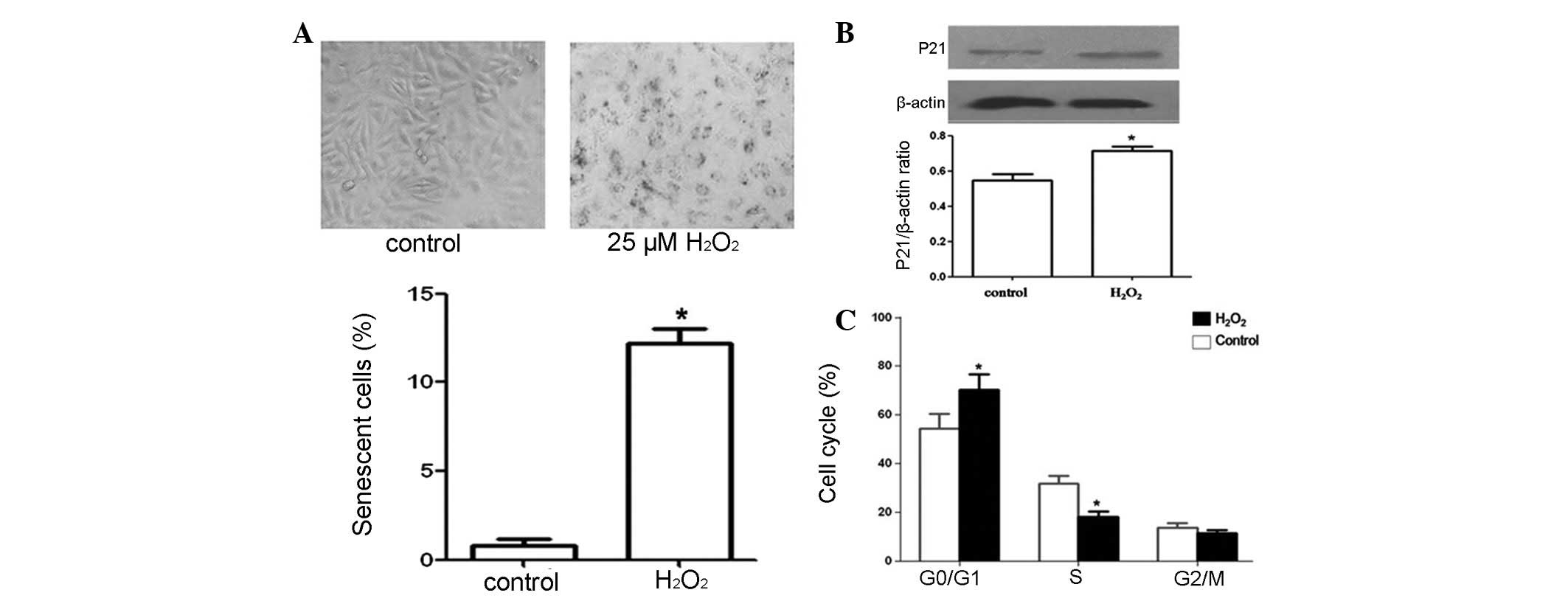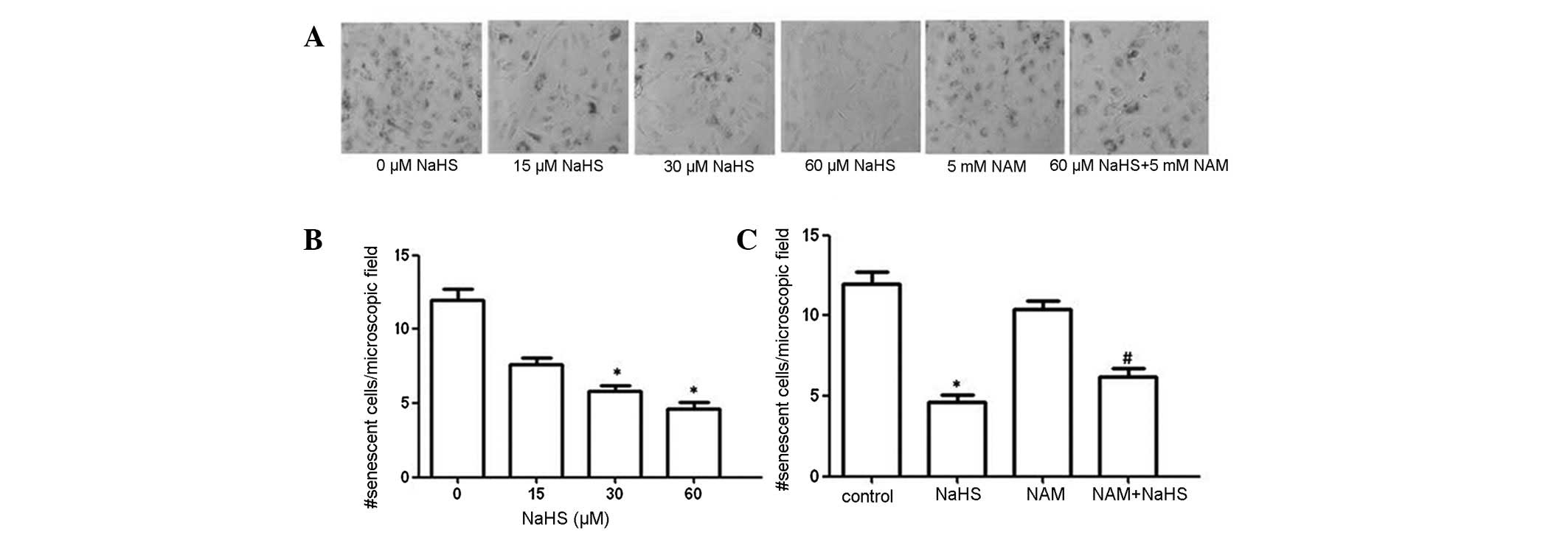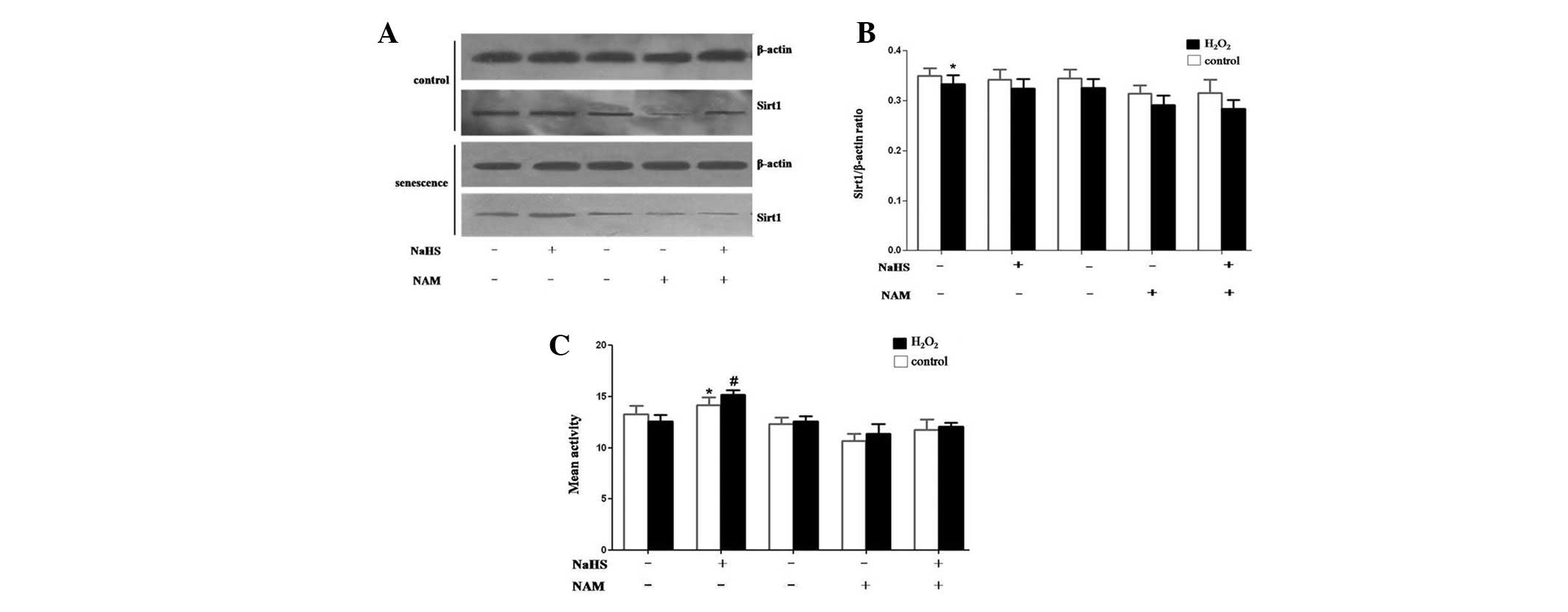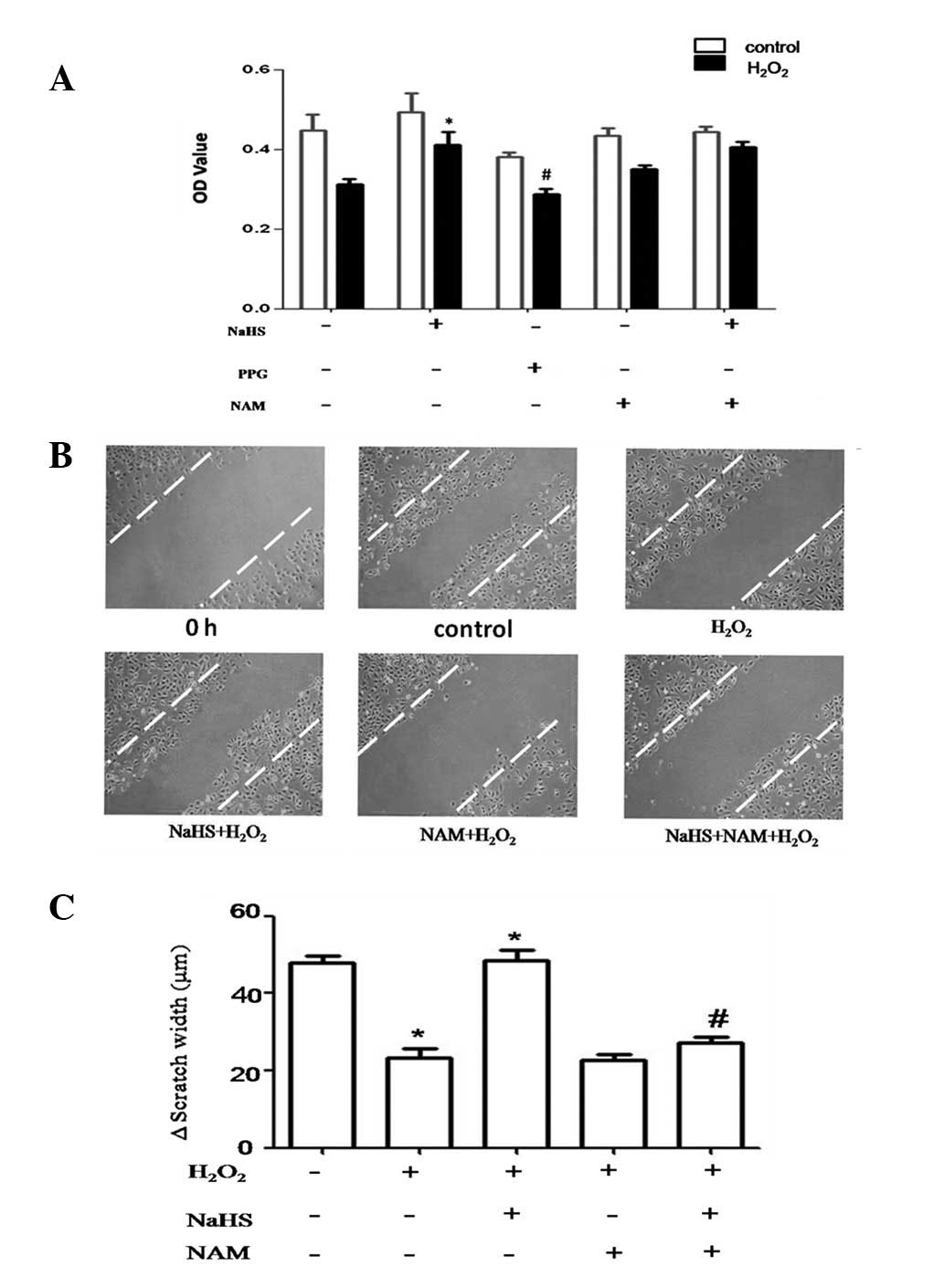|
1
|
Sniderman AD and Furberg CD: Age as a
modifiable risk factor for cardiovascular disease. Lancet.
371:1547–1549. 2008. View Article : Google Scholar : PubMed/NCBI
|
|
2
|
Behrendt D and Ganz P: Endothelial
function. From vascular biology to clinical applications. Am J
Cardiol. 90:40L–48L. 2002.PubMed/NCBI
|
|
3
|
Minamino T, Miyauchi H, Yoshida T, et al:
Endothelial cell senescence in human atherosclerosis: role of
telomere in endothelial dysfunction. Circulation. 105:1541–1544.
2002. View Article : Google Scholar : PubMed/NCBI
|
|
4
|
Serrano AL and Andrés V: Telomeres and
cardiovascular disease: does size matter? Circ Res. 94:575–584.
2004. View Article : Google Scholar : PubMed/NCBI
|
|
5
|
Gorbunova V, Seluanov A and Pereira-Smith
OM: Expression of human telomerase (hTERT) does not prevent
stress-induced senescence in normal human fibroblasts but protects
the cells from stress-induced apoptosis and necrosis. J Biol Chem.
277:38540–38549. 2002. View Article : Google Scholar
|
|
6
|
Frippiat C, Chen QM, Zdanov S, Magalhaes
JP, Remacle J and Toussaint O: Subcytotoxic H2O2 stress triggers a
release of transforming growth factor-beta 1, which induces
biomarkers of cellular senescence of human diploid fibroblasts. J
Biol Chem. 276:2531–2537. 2001. View Article : Google Scholar
|
|
7
|
Rimondi E, di Iasio MG, Gonelli A,
Celeghini C, Secchiero P and Zauli G: Hydrogen sulfide
down-regulates the expression and release of osteoprotegerin (OPG)
by vascular endothelial cells. Invest New Drugs. 30:1731–1735.
2011. View Article : Google Scholar : PubMed/NCBI
|
|
8
|
Lavu M, Bhushan S and Lefer DJ: Hydrogen
sulfide-mediated cardioprotection: mechanisms and therapeutic
potential. Clin Sci (Lond). 120:219–229. 2011.PubMed/NCBI
|
|
9
|
Predmore BL and Lefer DJ: Hydrogen
sulfide-mediated myocardial pre- and post-conditioning. Expert Rev
Clin Pharmacol. 4:83–96. 2011. View Article : Google Scholar : PubMed/NCBI
|
|
10
|
Whiteman M, Gooding KM, Whatmore JL, et
al: Adiposity is a major determinant of plasma levels of the novel
vasodilator hydrogen sulphide. Diabetologia. 53:1722–1726. 2010.
View Article : Google Scholar : PubMed/NCBI
|
|
11
|
Muzaffar S, Jeremy JY, Sparatore A, Del
Soldato P, Angelini GD and Shukla N: H2S-donating
sildenafil (ACS6) inhibits superoxide formation and gp91phox
expression in arterial endothelial cells: role of protein kinases A
and G. Br J Pharmacol. 155:984–994. 2008.
|
|
12
|
Jeney V, Komódi E, Nagy E, et al:
Suppression of hemin-mediated oxidation of low-density lipoprotein
and subsequent endothelial reactions by hydrogen sulfide (H(2)S).
Free Radic Biol Med. 46:616–623. 2009. View Article : Google Scholar : PubMed/NCBI
|
|
13
|
Geng B, Chang L, Pan C, Qi Y, Zhao J, Pang
Y, Du J and Tang C: Endogenous hydrogen sulfide regulation of
myocardial injury induced by isoproterenol. Biochem Biophys Res
Commun. 318:756–763. 2004. View Article : Google Scholar : PubMed/NCBI
|
|
14
|
Whiteman M, Cheung NS, Zhu YZ, et al:
Hydrogen sulphide: a novel inhibitor of hypochlorous acid-mediated
oxidative damage in the brain? Biochem Biophys Res Commun.
326:794–798. 2005. View Article : Google Scholar : PubMed/NCBI
|
|
15
|
Feng X, Chen Y, Zhao J, Tang C, Jiang Z
and Geng B: Hydrogen sulfide from adipose tissue is a novel insulin
resistance regulator. Biochem Biophys Res Commun. 380:153–159.
2009. View Article : Google Scholar : PubMed/NCBI
|
|
16
|
Miller DL and Roth MB: Hydrogen sulfide
increases thermotolerance and lifespan in Caenorhabditis
elegans. Proc Natl Acad Sci USA. 104:20618–20622. 2007.
View Article : Google Scholar : PubMed/NCBI
|
|
17
|
Luo J, Nikolaev AY, Imai S, Chen D, Su F,
Shiloh A, Guarente L and Gu W: Negative control of p53 by Sir2alpha
promotes cell survival under stress. Cell. 107:137–148. 2001.
View Article : Google Scholar : PubMed/NCBI
|
|
18
|
Brunet A, Sweeney LB, Sturgill JF, et al:
Stress-dependent regulation of FOXO transcription factors by the
SIRT1 deacetylase. Science. 303:2011–2015. 2004. View Article : Google Scholar : PubMed/NCBI
|
|
19
|
Ota H, Tokunaga E, Chang K, et al: Sirt1
inhibitor, Sirtinol, induces senescence-like growth arrest with
attenuated Ras-MAPK signaling in human cancer cells. Oncogene.
25:176–185. 2006.PubMed/NCBI
|
|
20
|
Dimri GP, Lee X, Basile G, Acosta M, et
al: A biomarker that identifies senescent human cells in culture
and in aging skin in vivo. Proc Natl Acad Sci USA. 92:9363–9367.
1995. View Article : Google Scholar : PubMed/NCBI
|
|
21
|
Köse GT, Korkusuz F, Ozkul A, Soysal Y,
Ozdemir T, Yildiz C and Hasirci V: Tissue engineered cartilage on
collagen and PHBV matrices. Biomaterials. 26:5187–5197.
2005.PubMed/NCBI
|
|
22
|
Oeseburg H, Iusuf D, van der Harst P, van
Gilst WH, Henning RH and Roks AJ: Bradykinin protects against
oxidative stress-induced endothelial cell senescence. Hypertension.
53:417–422. 2009. View Article : Google Scholar : PubMed/NCBI
|
|
23
|
Freedman DA and Folkman J: CDK2
translational down-regulation during endothelial senescence. Exp
Cell Res. 307:118–130. 2005. View Article : Google Scholar : PubMed/NCBI
|
|
24
|
Okatani Y, Wakatsuki A and Reiter RJ:
Protective effect of melatonin against homocysteine-induced
vasoconstriction of human umbilical artery. Biochem Biophys Res
Commun. 277:470–475. 2000. View Article : Google Scholar : PubMed/NCBI
|
|
25
|
Liang CC, Park AY and Guan JL: In vitro
scratch assay: a convenient and inexpensive method for analysis of
cell migration in vitro. Nat Protoc. 2:329–333. 2007. View Article : Google Scholar : PubMed/NCBI
|
|
26
|
Lakatta EG and Levy D: Arterial and
cardiac aging: major shareholders in cardiovascular disease
enterprises: Part I: aging arteries: a ‘set up’ for vascular
disease. Circulation. 107:139–146. 2003.
|
|
27
|
Ben-Porath I and Weinberg RA: The signals
and pathways activating cellular senescence. Int J Biochem Cell
Biol. 37:961–976. 2005. View Article : Google Scholar : PubMed/NCBI
|
|
28
|
Herranz D, Muñoz-Martin M, Cañamero M, et
al: Sirt1 improves healthy ageing and protects from metabolic
syndrome-associated cancer. Nat Commun. 1:32010. View Article : Google Scholar : PubMed/NCBI
|
|
29
|
Zu Y, Liu L, Lee MY, Xu C, et al: SIRT1
promotes proliferation and prevents senescence through targeting
LKB1 in primary porcine aortic endothelial cells. Circ Res.
106:1384–1393. 2010. View Article : Google Scholar : PubMed/NCBI
|
|
30
|
Sasaki T, Maier B, Bartke A and Scrable H:
Progressive loss of SIRT1 with cell cycle withdrawal. Aging Cell.
5:413–422. 2006. View Article : Google Scholar : PubMed/NCBI
|
|
31
|
Yang Y, Fu W, Chen J, Olashaw N, Zhang X,
Nicosia SV, Bhalla K and Bai W: SIRT1 sumoylation regulates its
deacetylase activity and cellular response to genotoxic stress. Nat
Cell Biol. 9:1253–1262. 2007. View Article : Google Scholar : PubMed/NCBI
|
|
32
|
Mustafa AK, Gadalla MM, Sen N, et al:
H2S signals through protein S-sulfhydration. Sci Signal.
2:ra722009.
|
|
33
|
Smith HS: Hydrogen sulfide’s involvement
in modulating nociception. Pain Physician. 12:901–910. 2009.
|
|
34
|
Ho KK, Myatt SS and Lam EW: Many forks in
the path: cycling with FoxO. Oncogene. 27:2300–2311. 2008.
View Article : Google Scholar : PubMed/NCBI
|
|
35
|
Frantzias J, Logan JG, Mollat P, Sparatore
A, Del Soldato P, Ralston SH and Idris AI: Hydrogen
sulphide-releasing diclofenac derivatives inhibit breast
cancer-induced osteoclastogenesis in vitro and prevent osteolysis
ex vivo. Br J Pharmacol. 165:1914–1925. 2012. View Article : Google Scholar
|
|
36
|
Zheng Y, Xu J, Ma G, Zhang J, Zhu Q, Liu
H, Zhang P, Zhu Y and Cai W: Bioavailability and pharmacokinetics
of S-propargyl-L-cysteine, a novel cardioprotective agent, after
single and multiple doses in Beagle dogs. Xenobiotica. 42:304–309.
2012. View Article : Google Scholar : PubMed/NCBI
|













